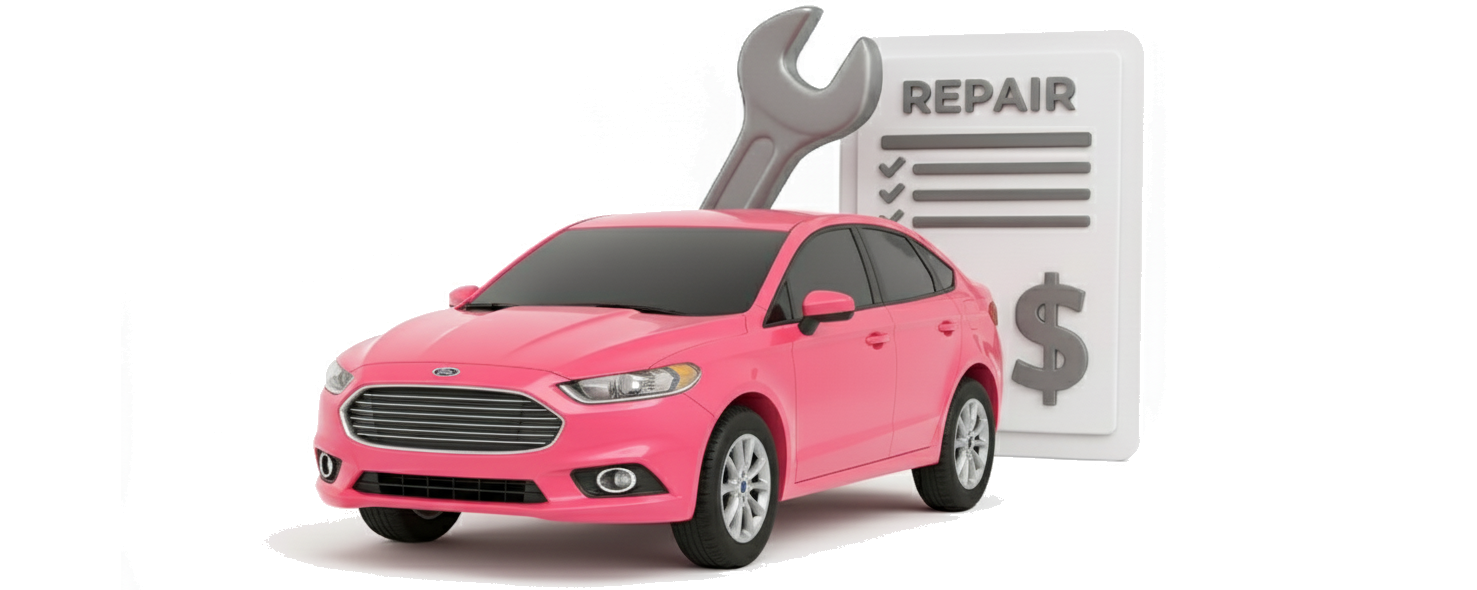Labor rates vary by car and market, as higher-cost metro areas trend toward the upper end. Understanding these costs can help you budget for repairs and compare prices locally to get a fair deal.
Want a localized estimate for your exact car and location? Download the Jerry app to compare real quotes from nearby shops in minutes.
Real customers Jerry has helped
Costs for replacing your window regulator depend on your exact vehicle, where you live and the parts used. With Jerry, you can quickly see what drivers are paying right now. Below are real examples of customers we’ve helped secure top prices for replacing their window regulators.
Estimates are modeled based on real vehicle and location data; names have been changed. Actual prices will vary by shop, parts, and vehicle condition.
Cost breakdown: Why the price varies so much
Each day, Jerry guides customers to competitive car repair prices, and has seen the same main reasons why those prices can change:
Type of vehicle matters:
Newer, luxury, or exotic cars usually have pricier parts and extra setup (like glass indexing), adding about $100–$400 in parts, 0.3–0.8 hr ($40–$180) in labor, and sometimes 0.1–0.3 hr ($15–$90) for calibration.
Shop type (dealer vs. independent):
Dealership rates are higher and OEM-only parts typically add $60–$360 versus an independent—roughly $40–$240 from labor rate and $20–$120 from parts markup.
Manual vs. power windows:
A hand-crank regulator is simpler and usually saves $70–$250 compared with a similar power window job because there’s no motor and the install is easier.
OEM vs. aftermarket:
OEM usually costs $50–$200 more but maximizes fit and longevity, while quality aftermarket parts can save $50–$150.
Assembly vs. separate components:
If the motor is healthy, reusing it can save $70–$250; cars that only sell the full assembly can add $80–$220.
Fasteners and consumables:
Rivets or bolt conversions, door-panel clips, and butyl tape for the vapor barrier can add $10–$40 in parts plus 0.2–0.4 hr ($20–$120) in labor—about $30–$160 total.
Calibration/initialization:
Many auto-up/anti-pinch windows need a reset after power loss or motor replacement; expect 0.1–0.3 hr ($15–$90).
The repair explained: What is a window regulator?
A window regulator is the mechanism inside your car door that makes the window go up and down. When you press the power window switch (or turn a manual crank in older cars), the regulator is the part that actually moves the glass along its track. It’s made up of metal arms, gears, or cables that guide and support the window so it moves smoothly and stays level.
In many cases, the motor and the regulator are replaced together on power windows. You don’t see this part during everyday driving, but it’s what makes rolling your windows up and down feel effortless and convenient.
Before removing any part of the old regulator, it’s critical to mark the locations of the mounting bolts with a paint pen or marker. This helps save the big headache of trying to align everything from scratch when installing the new regulator (though some adjustment may still be needed).

Symptoms of a failing window regulator
Jerry customers have learned that a faulty window regulator gives several common warning signs. But before assuming the regulator is bad, check the simple things first. Make sure the window lock button isn’t engaged—this disables the passenger window switches but not the driver’s switch. Then, look for these common symptoms:
- The window is stuck and won’t roll up or down.
- You hear grinding or clicking noises when you press the window switch.
- The window moves very slowly, struggles or goes up crooked.
- The window suddenly drops into the door with no warning.
- It works intermittently—especially when you open/close the door—which can indicate broken wires in the rubber door-jamb boot.
Pro tip: This issue most often affects the driver’s front window because it’s used the most. Also keep in mind that the regulator and motor are one assembly on many cars but separate pieces on others, which affects both parts pricing and labor.
Your action plan: How to get it done right
Use this action plan to properly diagnose and resolve the issue. These steps will help you partner with your mechanic to make sure the repair is done correctly and efficiently.
Confirm the symptoms:
Start with the window lock and test other windows to rule out a fuse/switch issue. Intermittent operation when the door moves? Suspect the door-jamb wiring. Jerry customers use the app to help them diagnose their car issues with confidence before heading to the shop.
Assess the job’s difficulty:
Consider your door panel’s complexity and whether the regulator is riveted or the door has a side airbag. If it looks tricky, lean toward a pro repair.
Get competing quotes:
Don’t just call one shop. Download the Jerry app to get detailed, binding quotes from certified local shops. Jerry can help you compare options to ensure you’re getting a fair price.
Check your warranty:
If your vehicle is new, see if the repair is covered under the factory “bumper-to-bumper” warranty. Extended warranties may exclude wear-and-tear items like regulators—check your contract.
DIY vs. pro: What to expect
No matter if you plan to tackle your window regulator replacement at home or leave it to a shop, Jerry can provide transparent pricing for parts and labor. Here’s what to consider when deciding if this repair is right for DIY.
Related repairs & inspections
If your window regulator needs replacing, it’s a good time to see whether any related repairs are due—you can often save by doing them together. Jerry helps customers find trustworthy pricing for multiple services at once.
- Window motor: If you’re replacing the regulator separately, confirm the old motor is healthy to avoid repeat labor later.
- Window tint & glass: A failing regulator can scratch tint or the glass if it pulls the pane off-track. Inspect and realign before button-up.
- Window seal (belt molding) & run channels: Worn felt can cause slow, crooked travel. Replace if needed so the new regulator isn’t overworked.
- Vapor barrier reseal: Always re-seal the plastic moisture barrier with butyl. Skipping this is how you end up with wet carpets and electrical issues.
- Window switch & wiring: Confirm switch operation and check for broken wires in the door-jamb boot if symptoms are intermittent.
What our customers are asking us
-
Can I drive with a faulty window regulator?
-
Are any special tools required?
-
Do I need to reset the auto-up/anti-pinch feature?
-
What happens if I wait too long?

Spencer Clayton is a mechanic, writer and fabricator who has hands that know their way around engines and a passion for storytelling. He’s diagnosed complex faults, built high performance engines and custom fabricated everything from fine detail parts to entire chassis while sharing how things work and why they matter. His background in everything from dealership technician work to building high performance cars spans a large breadth of experience, and he is driven by a love of all things automotive and a desire to share knowledge.

Everett Cook is an award-winning journalist and editor with more than 10 years of experience across a variety of industries. In editing for Jerry, Everett’s mission is to help readers have a better understanding of the costs of owning or leasing a car and to better understand their vehicle in terms of insurance and repairs. Prior to joining Jerry, Everett was an editor for Axios. His previous work has been featured in The New York Times, The Los Angeles Times, The San Francisco Chronicle, The Atlantic, Atlantic Re:think, The Boston Globe, USA Today, and others. He’s also been a freelance writer and editor with experience in SEO, audience building, and long-term content roadmaps. Everett is a proud graduate of the University of Michigan.








